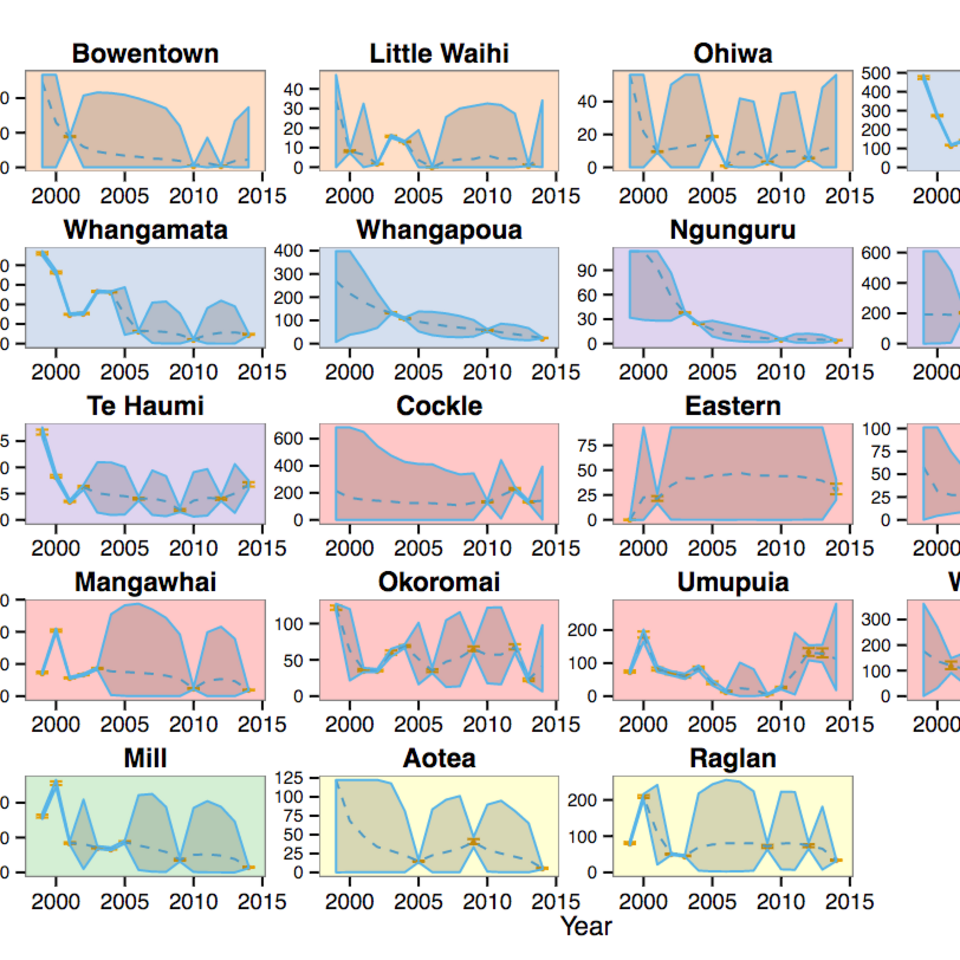Beaches in northern New Zealand have been monitored regularly for cockles and pipi (bivalves) since the early 1990s. Dragonfly took on the surveys two years ago and has now also completed an analysis of all the data collected from the 12 beaches in the past 15 years.
Philipp Neubauer created a model for the data analysis, which was intended to highlight ways to improve the process and prioritise sampling for particular beaches.
“Our model looked at beaches where multiple surveys had been carried out and how consistent an increasing or decreasing trend was. We were also trying to see if we could share information among beaches to limit the unknowns in years when there was no survey at a particular beach,” he says.
Phil says the idea was to look at how predictable the number and size of bivalves was on a particular beach, and to create a predictability index for them.
“If you have a beach where the population is just declining slowly, that’s more predictable than beaches where bivalve populations go up and down a lot. We could choose to prioritise sampling on the less predictable beach.”
The model confirmed that recent beach closures are having a positive effect overall on cockle populations.
“The study looked at the population dynamics before and after the beach closures. Every beach had a declining trajectory for large-size cockles before the closure, but now these populations are increasing for closed beaches.”
While surveying, Dragonfly recorded the exact coordinates of each sample site on every beach. This data collection has enabled the team to sample smarter this year, concentrating their efforts on areas within beaches that have larger numbers of bivalves.
“It’s more important from a statistical perspective to put the effort into sampling areas where there are lots of shellfish, to reduce the uncertainty. This year we have been able to sample a lot less points because we have massively increased the efficiency and the precision of our sampling.”
The bivalve surveys have been led by Katrin Berkenbusch for the last two summers, under contract from the Ministry for Primary Industries (MPI). A preprint of the article, including the model code is available from PeerJ Preprints, with revisions pending.
Read more about the surveys or find out about how another data analysis project helped decision-makers.


